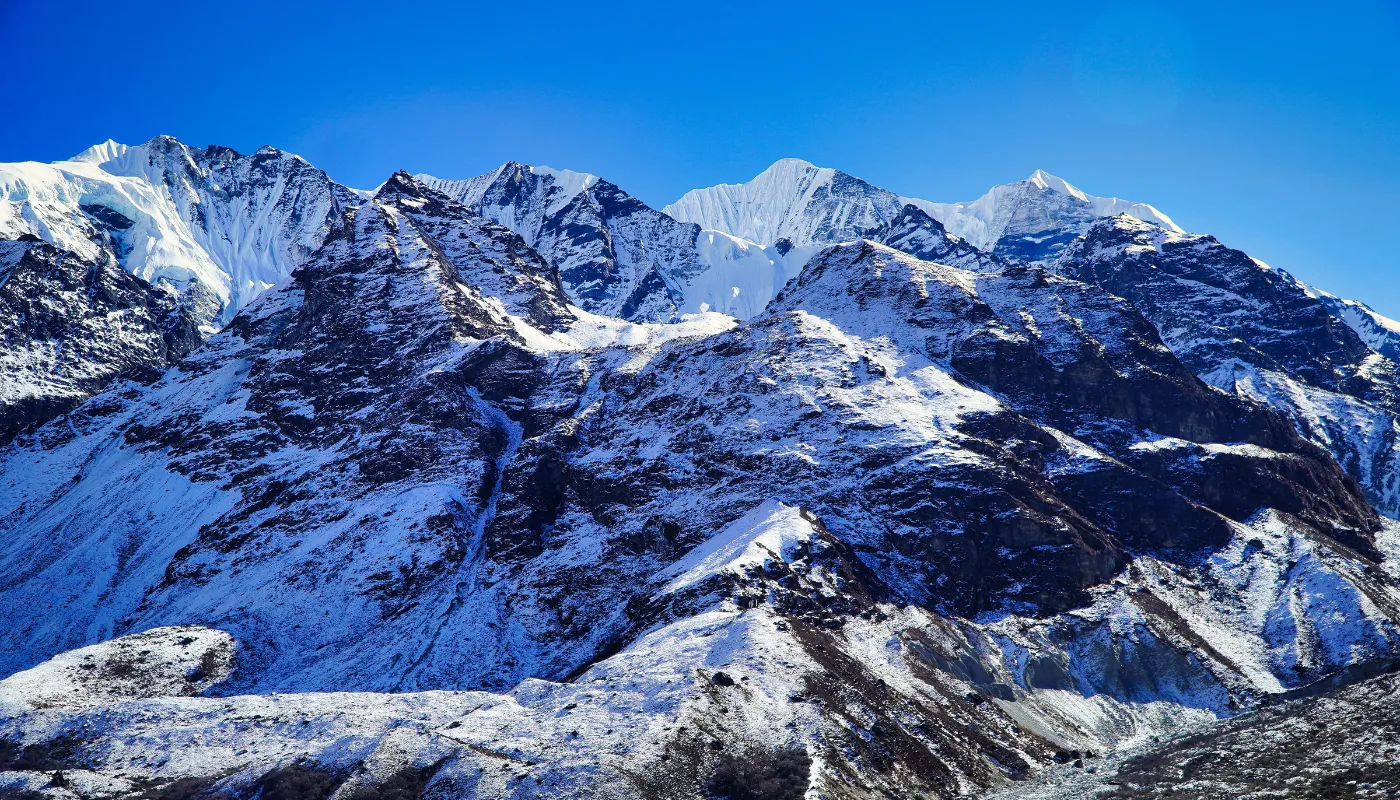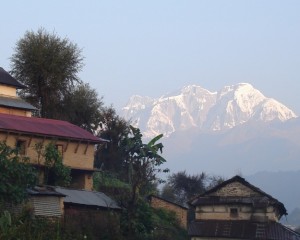Best Time to Visit Langtang: A Complete Guide
You are set to visit Langtang for your next trek. But which season is best for you to immerse yourself in its beauty?
The Langtang Valley is located on the lap of the Himalayas and is inhabited by Tibetan-influenced ethnic Tamang groups. The diverse culture, exotic wildlife and friendly local people are the highlights of the trekking.
Well, to have an amazing trek experience, you must visit Langtang during its best season. So, without any further ado, let us find out which is the best season.
Which is the best season to visit Langtang Valley trek?
Langtang is a small valley in Rasuwa, about 80km from the Kathmandu Valley. The valley provides the Langtang trekking trail. Along the trail lies the Langtang National Park, which is home to some endangered species of animals. The trekkers enjoy the local food and encounter the ethnic Tamang people.
On the Langtang trek route, trekkers can experience variations of four seasons: summer, winter, spring, and autumn. So, let's learn about all of these weather conditions for the Langtang Valley trek.

Spring Season ( March-May)
Spring is one of the best seasons to visit the Langtang Valley trek. During this time, the region experiences the beauty of natural wonders after the rough winter season. The snow begins to melt, showing off the greenery, blooming flowers, and waterfalls. It creates a beautiful landscape for trekkers to explore.
Highlights of Spring Season:
- Blooming Rhododendrons: Witness the vibrant display of rhododendron flowers painting the hillsides in shades of red, pink, and white.
- Spectacular Scenery: Enjoy panoramic views of snow-capped peaks, lush valleys, and cascading waterfalls amidst the clear skies.
- Moderate Weather: Experience comfortable trekking conditions with mild temperatures and minimal rainfall.
- Wildlife Sightings: You will encounter various wildlife species, including Himalayan red pandas, langur monkeys, and a variety of bird species.
- Cultural Festivals: Participate in local festivals such as Buddha Jayanti and Mani Rimdu.
Challenges of Spring Season
- Crowded Trails: Spring is a popular time to visit Langtang. It results in overcrowded trails and limited accommodation availability.
- Trail Conditions: Melting snow and increased water flow can lead to muddy and slippery trails.
Tips to Tackle Challenges
- Plan Ahead: Book accommodations and permits in advance to secure your stay and avoid last-minute inconveniences.
- Pack Accordingly: Bring layers of clothing suitable for varying weather conditions, including waterproof gear, to stay dry during unexpected rain showers.
- Stay Flexible: Be prepared to adjust your itinerary in response to changing weather conditions and trail difficulties.
- Start Early: Begin your trekking days early to avoid crowds on popular trails and to make the most of daylight hours.
- Hire a Guide: Consider hiring a local guide who is familiar with the area and can safely navigate changing trail conditions.
Autumn Season ( Sep - Nov)
Compared to the other seasons, the autumn season is the alternative season to trek Langtang Valley. During this time, the monsoon rains have reduced, leaving behind clear skies and refreshing air. Temperatures in Langtang daytime are around 15 to 20 degrees Celsius (59 to 68 degrees Fahrenheit), and cooler nighttime lows are approximately 5 to 10 degrees Celsius (41 to 50 degrees Fahrenheit). 
Highlights of Autumn in Langtang:
- Clear Skies: Enjoy uninterrupted views of Langtang's stunning mountain vistas and panoramic landscapes.
- Mild Weather: Experience pleasant temperatures perfect for trekking, without the heat of summer or the cold of winter.
- Festive Atmosphere: Immerse yourself in the cultural celebrations of major Nepalese festivals like Dashain and Tihar an experience with local traditions and festivities.
Challenges of Autumn in Langtang
- Crowds: Due to its popularity, Langtang can get quite crowded during the autumn trekking season
- Accommodation Availability: With the influx of trekkers, finding available accommodation along the trails can be challenging.
- Permits and Regulations: Ensure you have the necessary permits for trekking in Langtang National Park, as regulations may be enforced during peak season.
Tips to Tackle the Challenges
- Start Early: Begin your trek early in the day to avoid crowds on the trails and secure accommodation at your desired stops.
- Book in Advance: Make reservations for accommodation to guarantee a place to stay, especially in high-demand areas.
- Obtain Permits: Obtain trekking permits and necessary documentation well in advance to avoid any last-minute complications or delays.
Summer Season (June - August)
The Summer season in Langtang spans from June to August. The rainy season is just beginning, and the temperature is moderate.
The daytime temperatures range from 10°C to 25°C (50°F to 77°F). It gives pleasant conditions for outdoor activities such as sightseeing. At night, temperatures at higher elevations drop to 5°C to 10°C (41°F to 50°F).
Rivers surge with water, and forests come alive with vibrant greenery. The serene environment along the mist-covered valleys and the refreshing scent of wet earth make this place heavenly.

Highlights of the Summer Season
- Lush Greenery: The monsoon rains give life to the landscape that provides the greenery in the hillsides.
- Fewer Crowds: Summer sees fewer trekkers than peak seasons. It gives a quieter and more intimate experience of nature.
- Cultural Immersion: Experience the rich cultural traditions of the Sherpa and Tamang communities. This season features festivals like the Tarna festival and Janai Purnima.
Challenges of the Summer Season
- Heavy Rainfall: Persistent rain showers can make trekking trails muddy and slippery which is a major challenge to hikers.
- Landslides and Avalanches: The increased rainfall increases the risk of landslides and avalanches in higher altitudes.
- Leeches and Insects: Wet conditions attract leeches and insects. it can be bothersome during trekking.
Tips to Tackle the Challenges
- Pack Appropriately: Bring waterproof gear, including rain jackets, pants, and covers for your backpack and gear.
- Use Insect Repellent: Apply insect repellent and wear leech socks or gaiters to protect yourself from leeches and insects.
Winter Season (Dec-Feb)
Winter season is the time when snow starts to touch the surface, making Langtang the land of snow castles. Langtang transforms into a serene winter wonderland, with occasional snowfall adorning the landscape. Daytime temperatures often range from 5°C to 15°C (41°F to 59°F), while nighttime temperatures can drop below freezing -10°C (14°F) or lower at higher elevations.
Highlights of the Winter Season in Langtang:
- Tranquil Trails: Experience the tranquillity of Langtang's trails as they pass through snow-covered forests and meadows.
- Clear Views: Enjoy crystal-clear vistas of the surrounding mountains and valleys, unhindered by clouds or mist
- Fewer Crowds: Revel in the solitude of trekking during the off-peak winter season with fewer tourists on the trails.
- Cultural Encounters: Engage in authentic cultural interactions as it is time for traditional festivities and celebrations in the region.
Challenges of the Winter Season in Langtang:
- Cold Weather: Endures freezing temperatures a risks of frostbite and hypothermia if not adequately prepared.
- Snowfall and Trail Conditions: Navigate potentially snowy and icy trails that require additional caution and slower progress
- Limited Facilities: Along the trekking routes, you may encounter reduced availability of accommodation and services, as many tea houses may close or operate only partially during the winter months.
Tips to Tackle the Challenges
- Layer Up: Dress in warm, moisture-wicking layers to trap heat close to your body and regulate temperature effectively.
- Stay Hydrated: Drink plenty of fluids to stay hydrated, even in cold weather, and avoid dehydration, which can exacerbate the effects of cold.
- Carry Essentials: Pack essential gear such as sturdy trekking boots, crampons or microspikes for icy trails, and a four-season sleeping bag rated for sub-zero temperatures.
- Plan Ahead: Research trail conditions, weather forecasts, and tea house availability in advance,
- Take Precautions: Practice caution when crossing snowy or icy terrain, use trekking poles for stability, and be prepared to adjust your itinerary based on weather and trail conditions.
To wrap up, Langtang is the trekking paradise of Nepal. It offers majestic views, tasty food, friendly local people, and exotic flora and fauna. Every season has its charms and challenges for the Langtang Valley trek.
The best seasons for Langtang trekking are spring and autumn. However, the summer and winter seasons are also the seasons when trekkers can experience this route. With the Nepal Vison treks, the Langtang trekking season can be an amazing trekking experience for you.
FAQS






